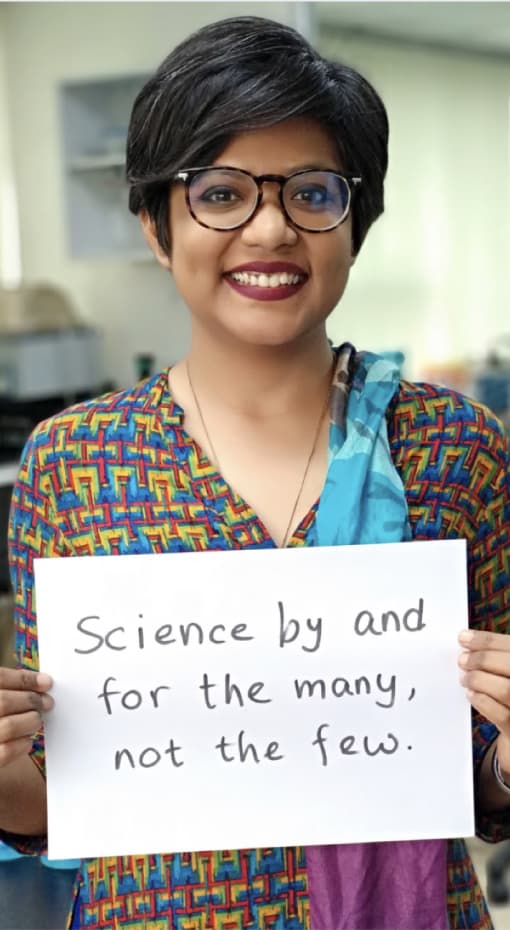
In the midst of the pandemic, CHRF received nationwide recognition for being the first to sequence SARS-CoV-2 in the country. My inbox flooded with messages congratulating us, and a lot of them were from mothers, and young students aspiring to be scientists. They wrote to me about how important this representation was for them because they had never met a scientist or visited a research lab before. This made me ponder upon how limited access to scientists and scientific resources are in Bangladesh, which leads to a general disinterest in pursuing a career in science. This is evident in the society overall and holds particularly true for women. Recent data show that only 8% of women in Bangladesh’s public universities choose to enrol in STEM fields. To address this, we launched “Building Scientists for Bangladesh“ with three streams. We show young school students that scientists look just like them, and allow them to explore the inventive and collaborative nature of science in a safe and welcoming environment. For aspiring scientists, we provide hands-on training in laboratory and analytical skills, empowering them to make meaningful scientific discoveries. All throughout, the constant driving force that motivates us is the acknowledgement that for a society to thrive, we need scientists to work alongside doctors, engineers, and policymakers. With our initiative, we encourage people, regardless of their age and aspirations, to ask questions, work together, generate evidence, and analyse that to make their own decisions — much like how a scientist would.
Dr. Senjuti Saha
Deputy Executive Director
Child Health Research Foundation (CHRF)